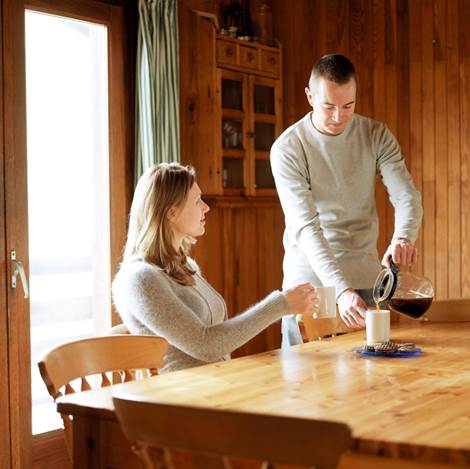It was 2 p.m. on a Monday afternoon. I was planning out a series of emails for my subscriber list and looking for ideas.
Then it happened…
I came across a video by online course creator Debbie Hodge where she described the differences between creating an online course and writing a how-to book.
That got me thinking about many of the live workshops and talks that I’ve attended…
Where the presenter did a lot of telling, just like a book, and…
Where I, along with others in the audience, quickly became bored and restless.
You’ve no doubt been to many similar sessions…
That were nothing more than an information dump snooze fest…
Where you could have saved time, effort, and money by just reading the presenter’s blog posts or book.
You’ve also been to awesome sessions that have kept you engaged, motivated, and inspired, and …
That guided you in solving a problem, managing a situation, or creating something new in your life.
I know you don’t want your audiences to suffer from TEGO — Their Eyes Glazed Over…

I know you want your audiences to be fully engaged, love your sessions, come running back when you offer something new, and refer you to others.
Today I’m going to share with you why lectures are ineffective and examples of how 3 of my students turned their lecture-style sessions into an engaging learning experience.
Also, I’ve put together a checklist that you can download and use to evaluate the amount and type of engagement you’ve included in your workshop, talk, or retreat session and help you decide what you need to add in order to ramp up the engagement.
Click here to download the engagement checklist.
Why Lectures Are Largely Ineffective
A research study at the University of California, San Diego, tells us that in 2015 we were taking in 74 gigabytes of information every day.
74 gigabytes!!
No doubt it’s more today!
This is what you and I as presenters are up against. We have to break through all that noise and all those distractions and design our workshops, talks, and retreat sessions in a way that our audience members can remember and use our “noise”.
Attention span is greatest at the beginning of a session. It lasts about 10-20 minutes. Then our attendees lose their focus.
It returns…resets, so to speak, but quickly dwindles …and our audience members start zoning out every 3 to 4 minutes.
So, what do we do?
The answer is simple…
Make frequent changes to the presentation/teaching methods you use during your sessions….
Your attendees don’t need more information. They’re inundated with it.
The greatest gift you can give your audience members is to use a variety of strategies to help them process and use the information you’re giving them.
In the next section, you’ll read how 3 of my students turned lecture-style sessions into interactive relatable learning experiences for their audiences.
Feel free to borrow their strategies!
Audience Engagement Examples
Example 1 – Barbara’s customer service workshop for plumbers
Example 2 – Jamie’s nutrition presentation
Example 3 – Dan’s financial talk
Example #1 – Barbara’s 4-Hour Workshop
My student Barbara is an award-winning speaker. She’s awesome when it comes to one-way communication. She’s entertaining and funny. Her expertise is customer service.
She was asked by a client to present a 4-hour customer service workshop to a group of plumbers.
She had plenty of content and we worked together to turn it into an interactive session since Barbara knew that sitting through a 4-hour lecture would not create raving fans of this particular audience.
The first part of the session plan was to warm up the attendees with small group discussion.
Why small group discussion?
There’s a problem that frequently occurs when you ask an audience a question right off the bat… no one answers.
Groan! How embarrassing and uncomfortable!
Barbara didn’t want to risk the possibility that her attendees wouldn’t participate when she asked a question. She knew she needed to get them engaged and active immediately. She had them partner up with one or two others sitting close by and discuss the answers to these questions:
- What does customer service mean to you?
- What are some examples of good customer service you’ve experienced?
- What are some examples of bad customer service you’ve received?
- How did these situations make you feel?
In addition to warming up her audience members and getting them ready to share with the entire group, Barbara was establishing a baseline by bringing their experience into the discussion. She asked for a few volunteers to share some of the comments that had come up in discussion with their partners.
Then she shared her content.
Barbara stopped at the end of each sub-topic and had the plumbers discuss how they could apply what she was teaching them.
She pulled it all together at the end by asking them to create a plan of action as to how they could regularly and consistently use what they learned to improve the customer service in their businesses.
Lastly, she asked for volunteers to share their plans so that she could provide feedback and so that the others in the room could learn from each other.
Example #2 – Jamie’s 1-Hour Session
Jamie is a well-trained and very smart nutritionist. In addition to helping her clients make good choices when it came to their nutrition, she was hoping to make a few sales of her energy supplement during her 1-hour talk.
We talked about how to create engagement during her 1-hour talk “How to Prevent Energy Slumps Throughout Your Work Day.”
Jamie had a lot of information to share but was afraid of putting everyone to sleep, so she started off with a case study that the audience members could relate to.
She showed this slide and started her story…

“I’d like you to meet Mike and Carly.
They find themselves reaching for their favorite coffee several times a day to give themselves a big boost and offset their energy slumps.
Every day at around 10:00 a.m. and 2:00 p.m., they both experience a slump in energy.
Mike finds himself slowing down considerably and often feels the need for a nap. He can’t muster the creativity he needs for his job in an ad agency when he feels this way.
Carly can’t think clearly in the afternoon at her job in a tech company. Her mind is foggy.
Mike and Carly typically eat a muffin or croissant for breakfast and a turkey sandwich or some pasta for lunch.”
As an expert, Jamie knew her audience. She was looking to engage them and give them an impactful and relatable learning experience. She wanted her audience to be thinking…
“Hey, that’s me! That’s exactly my situation. She gets me.”
Jamie used this case study as a foundation for a group discussion. She had a small audience that day, so she started asking questions that would get the attendees to work on the case study together.
- What is causing the energy drain?
- Who here has similar energy slumps?
- What are the effects of certain foods on energy?
- What changes could Mike and Carly make in order to improve their energy levels?
As with Barbara in example #1 above, Jamie wanted to have an idea of the experience and knowledge that the attendees brought to the session so that she could help them to the best of her ability.
As they discussed each question, she contributed her expertise and advice.
At the end of her session, she gave everyone an opportunity to try a sample of the energy supplement that she was selling.
Example #3 – Dan’s 10-Minute Talk
Dan is a financial planner who was allotted 10 minutes to speak at a networking event. His primary purpose was to establish his credibility and expertise within the short time that he had.
He had some rather dry informational slides that he was tempted to begin his talk with, but Dan didn’t want to risk losing his audience right from the get-go.
Instead, he decided to start with three 1-minute stories… examples of clients he had helped.
People love hearing stories, and Dan was able to grab his audience’s interest with these stories as well as establish his credibility quickly.
After the stories, he turned to his slides with the segue line “In case you’re interested in how I’m qualified to help these people, here’s my education and training…”
At this point, the attendees were both curious and willing to hear about his credentials. He then finished up with a short Q&A session.
Conclusion
Engaging workshops, talks, and retreat sessions can change your business!
Break through all the noise of your competition by adding audience engagement techniques such as interaction, stories, questions, small group discussions, case studies and more…
- at the beginning of your session
- throughout your session, and
- at the end of your session…
… no matter how long or short it is.
Resources
Check out the programs in our Engaging Talks and Workshops Online Academy here.

0 Comments